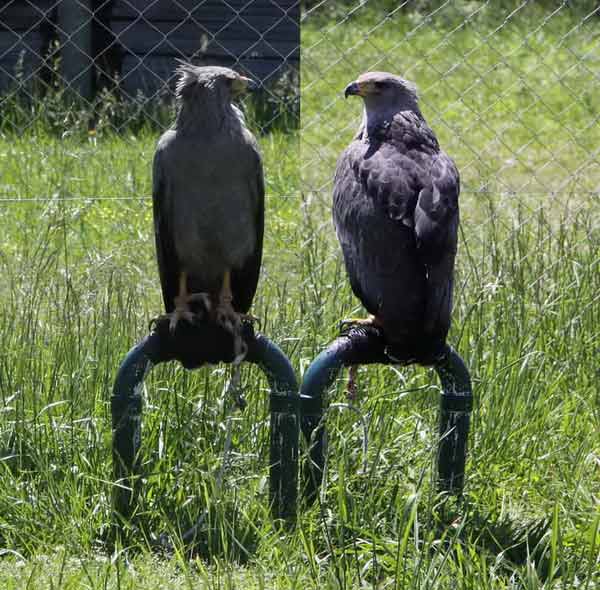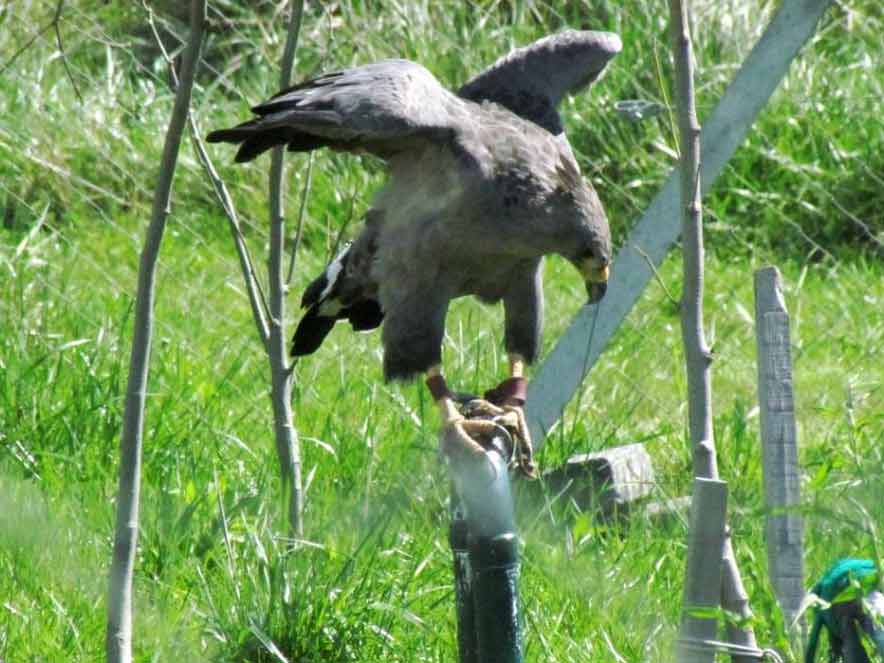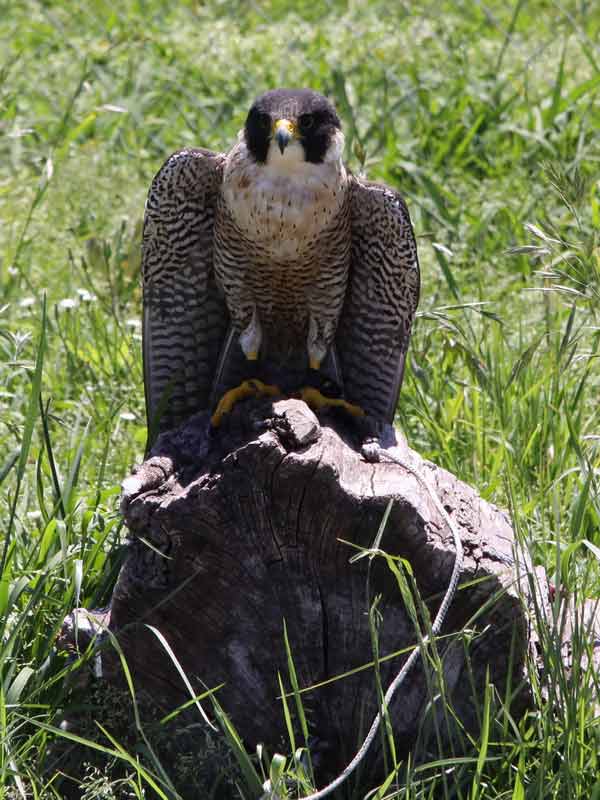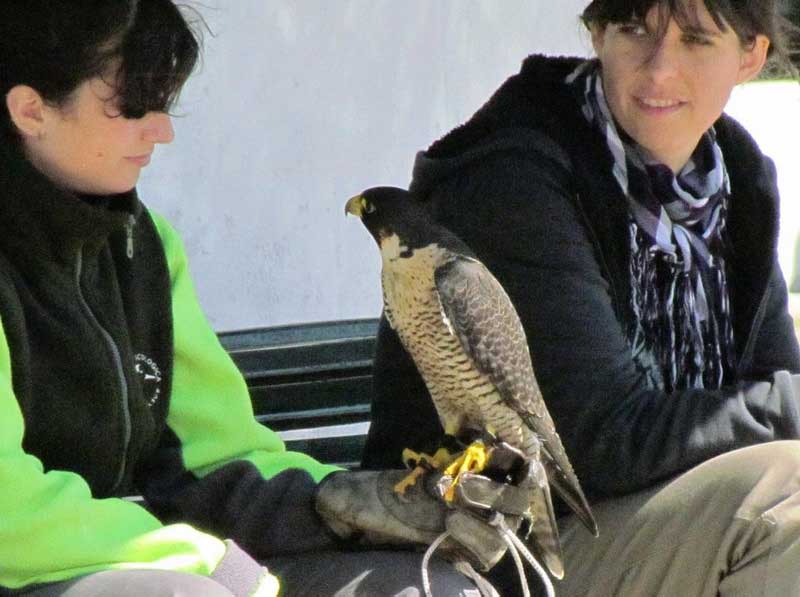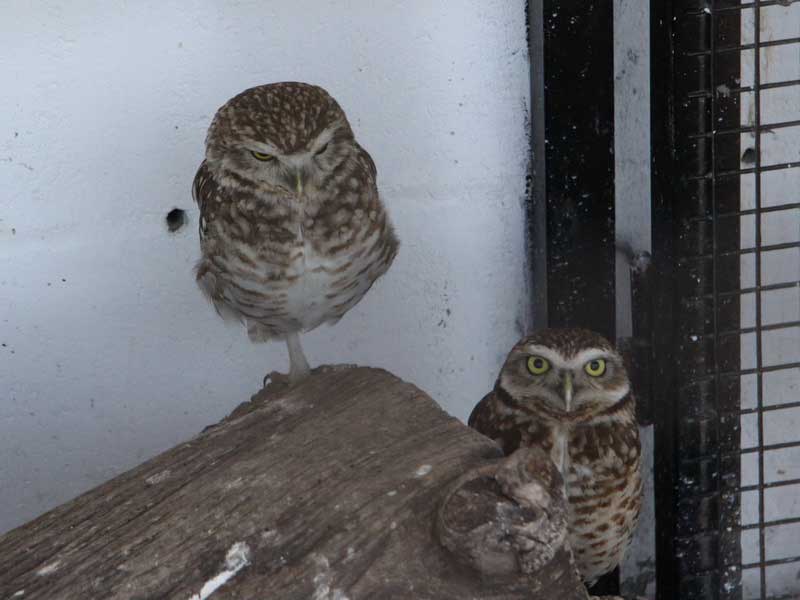Next to the nursery at the Viamonte Access functions the Raptor Rehabilitation Center. Access is forbidden to public in general so its work passes unnoticed to visitors. It is worth telling and showing what their mission is.
This center works in collaboration with the City Zoo and Andrés Capdevielle, Director of the Project of Raptor Conservation at the City Zoo, is in charge of this area.
“Since 2008 we have been working here in the reserve when this place was a clear patch. Hawks were brought in winter and were trained. Only last year a formal agreement was signed between the Zoo and the City Government to recycle this place through an investment made by the Zoo to create a Rescue Center. Facilities were inaugurated on 27th of April of the current year. We began with raptors because this project was already being developed. But the objective is fauna in general. At this moment a veterinary center is being built. It will provide primary attention to animals, though surgery will still be performed at the Zoo.”
On a wall a board summarizes the way this program operates. It refers specifically to the Crowned Eagle, but it shows an overall concept: two institutions working together receiving, providing medical attention and rehabilitation before release. 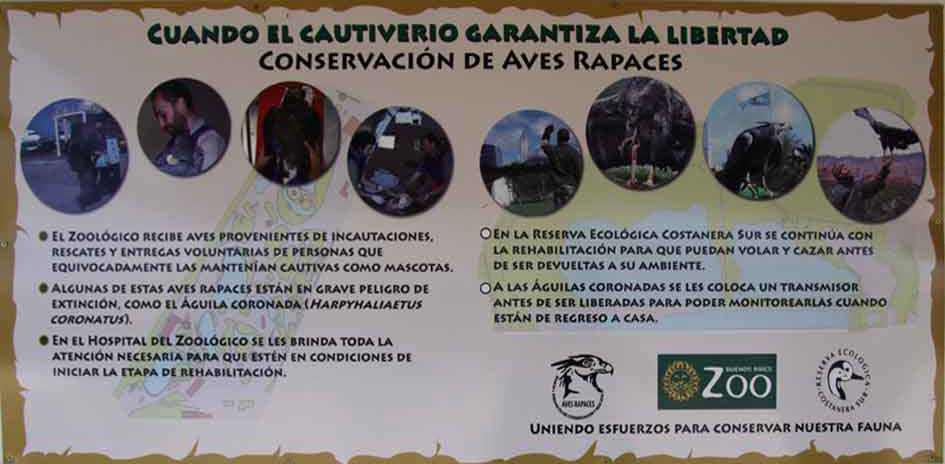
“We have been working on the rescue of anything coming from anywhere: either a Chimango Caracara from Buenos Aires or this Crowned Eagle from San Luis. This is a nation wide program. The Zoo receives a bird, assists it and when fit it is taken to the reserve. Here the bird is rehabilitated to strengthen their flight muscles. Each species differs in their rehab programs.
In the case of the Crowned Eagle there is a wire all along with a small ring. The eagle is tied with a rope and is called so that it moves from one side to the other. For the American Kestrels, instead, a long cage with two perches located at both ends will suffice. It is the only place to perch. So, leaving a perch necessarily implies flying to reach the other one. Participation of trainers is not essential in the process of their recovery.”
Bird feeding techique is crucial to determine the rehab program. "Let's take an example, a falcon, an eagle and a condor. When the falcons (peregrine) hunt, they steep dive with vigorous flapping. To release a peregrine falcon besides being fit it must be very well trained. Otherwise, it will not catch anything and after three days it will die from hunger. The eagle hunts with a rather stalking technique. It flies around. When it spots something it perches on a tree, gets near the prey till it attacks it. The condor is a scavenger and it only opens its wings to fly hundreds of kilometres. When a condor is brought because of a hunting accident or poisoning, training is not demanding like that of a peregrin falcon. It is given medical treatment and is taken back to wild life. It is kept in big cages for some time to familiarize with the environment. Then it is released. Due to its feeding habits dealing with a condor is much easier in spite of its big size."
We must remember housing at the center is temporary. Today patients will leave room for new ones.
"The most frequent birds arriving at the center are American Kestrels, Chimango Caracaras, lots of nocturnal raptors, e.g. Pygmy-owls, which are abundant in squares. Nocturnal raptors leave the nest early. Before they fledge they can be found moving out of the nest. People believe they are dying and the only thing we do is to wait till they fledge. Other birds on the list are Southern-crested Caracaras, Barn Owls, Harris's Hawks and Roadside Hawks.”
Today (October 2012) at the center there are a Crowned Eagle Harpyhaliaetus coronatus, two Peregrine Falcons Falco peregrinus, two American Kestrels Falco sparverius, two Southern-crested Caracaras Caracara plancus and three groups of Burrowing Owls Athene cunicularia.
The two Peregrine Falcons belong to the subspecies cassini from Argentina. They hit a mirror glass window in Palermo. One had a broken bill and the other crushed its malar when it collided against the pane. These birds are used for falconry and escaped. In this case two negative actions are mixed. Man-made objects which become a hazard for birds such as wires, antennas, glass windows, etc. and the introduction of a species for whatever reasons. It these falcons breed, the ecosystem becomes altered.
Another activity carried out is microchipping and ringing.
"Ringing is for an easy identification when it is spotted after release. It is important to inform the reserve since this allows us to monitor their movements. Besides the juvenile Roadside Hawk a ringed Chimango Caracara was spotted at the Women's Bridge and another one was seen around here.
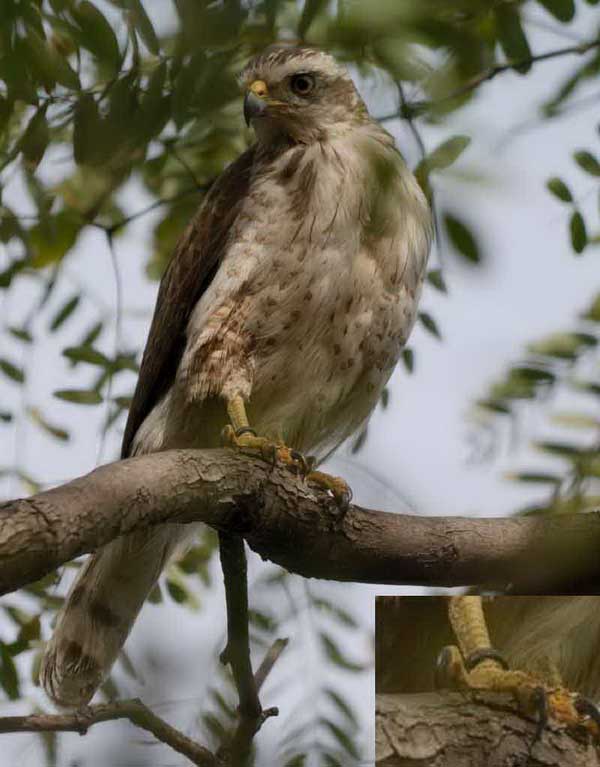 © Jesús Fernandez © Jesús Fernandez |
| Roadside Hawk reintroduced in its habitat after being rehabbed at the center. |
The example of the Burrowing Owls shows antoher facet of this center.
"A part of the agreeement between the Zoo and the Reserve has to do with the recreation of the original fauna of this area. To introduce, for example, the capibaara or other groups to be managed. In this case, the Burrowing Owls.
Here there are 15 Burrowing Owls divided into three families. These animals live in groups. As they arrive they themselves form the groups. We have built these improvised caves and they are laying eggs already. The group on that corner has 13 eggs. Females lay eggs in the same nest.
The idea is to release them in the reserve. We plan to distribute them in different places, build dog-proof cages for at least some meters, give them a safe shelter and feed them. After some time, we'll disassemble the cages so that they settle down in their territory and we will see whether necessary to supplement food. This will be a population in the wild which will be managed and monitored to see how it thrives. One of the these three groups will be located where it can be seen by visitors."
All this work forms part of a major plan whose objective is to reinforce the educational, recreational and social function of the reserve through management. Besides refilling the ponds with water and providing adequate facilities, among others a new nursery, which is under construction, and the enlargement of this center. In spite of the fact that we count on a small space to develop this task we make do with it the best we can.
Thanks, Andrés, for your care and for being so kind.


